22 A game of Li[Fe] and Escape Rooms in an Integrated Engineering program
Elizabeth Pluskwik
It can feel daunting to implement game-based learning into the classroom. We know it works, and it looks fun, but how does one begin? I’ve slowly been implementing game-based learning into engineering education courses, and it has been successful; sometimes just with a few students at a time and sometimes with a larger group.
I’ll share my design process and experiences with my first steps in game-based learning. After learning about the principles and elements of game-based learning with instructional designer, Carrie Miller, I wanted to decide how to implement game-based learning in my courses. I landed on a broad learning objective that all students in our program seek to achieve each semester: the mastery of basic fundamental principles or concepts from each course in our program. Students learn these principles a few at a time in each course and are tested every semester on their accumulation of this fundamental principle knowledge. We require 60+ Fundamental Principles of Engineering to be learned, applied, and retained over students’ last four semesters in the undergraduate program, and hopefully, beyond. This is assessed in a 30-minute spoken exam in front of a panel of faculty four times during their 3rd and 4th years (once a semester). We noticed that learners were keeping these concepts into “silos” in the course where they were learned, then “dumping” or forgetting them soon afterward. Their recall of concepts learned in prior semesters was poor.
I wanted to create a game-based retention activity for learners to practice these fundamental principles in the semesters after they were initially learned. Regular retrieval of knowledge makes it “stickier” and results in improved long-term retention. Game-based learning seemed perfect for this type of regular retrieval and practice of concepts learned in earlier courses and as preparation for the Fundamental Principles Exam.
My thought was to share game-based learning strategies with students and have them create a game to give peer learners an opportunity to practice these fundamental principles in a low-stress, fun, small group setting. This would encourage interleaved spaced retrieval of the concepts for both the game developers and their peers who played the game. I offered a one-credit elective course on Game-Based Learning and three students enrolled.
I shared Gee’s Principles of Games and a couple of Karl Kapp’s books with the small group. We played some games, discussed the elements of games, and learned the principles of game-based learning. I shared my vision of a Fundamental Principles Review Game and they accepted the challenge to develop it. The three engineering students brainstormed, researched virtual platforms, and generated many ideas for various types of games. They used the Engineering Design Process to research, generate ideas, debate, decide, and develop and test the game. It was not always an agreeable process, as they defended their ideas vehemently in our twice-weekly meetings! Using their developing communication and negotiation skills, they settled on a board game with players having pieces to move to an endpoint on the board (like CandyLand or Life). Players would answer questions on fundamental principles in order to advance. At first, they wanted to create an app or use a digital platform from the start, but I nudged towards a paper prototype that could be seen, felt, and tested by other students more easily.
Knowing that writing multiple-choice questions is an effective way to learn, I had these three students write the first sets of questions for the game. These would be in three decks based on difficulty level – basic, moderate, and challenging. These roughly correlated with deeper levels of Bloom’s Taxonomy and Webb’s Depth of Knowledge models. Writing the question cards caused the students developing the game to remember and review their fundamental principles knowledge – so mission accomplished from my end! They also added fun features such as gambling (double or nothing for each question), peer help (open-ended scenarios for all players to solve together), and different types of spaces on the board which led to a different type of question card being played. The “win” state was determined two ways, which garnered inclusivity; play continues until all players have completed the board, then the one with the most points wins. Points were accumulated as actual taconite pellets since the board was a map of our area of Minnesota, where taconite mining is a primary industry. The center of the board is the Plant, where the gambled pellets are held. The tokens are railroad cars, piles of logs, stones, and other mining-related pieces. They also wrote Instructions and Rules of Play and printed a basic game board. My job as the instructor was to facilitate, ask guiding questions, and prompt them to follow their project management plan to complete the deliverables.
After 8-weeks of development, the group play-tested the game with peers, and the course ended. Assessments included weekly reflections of their learning, quizzes on game-based learning principles, as well as jointly developing the game, board, and written instructions through an iterative development process.
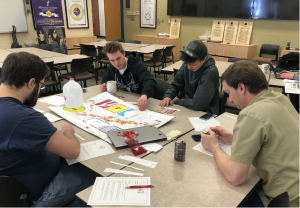
Figure 13. Students playtesting the first version of the Fundamental Principles of Engineering game.
Two new students that had play-tested the game were now interested, and they enrolled for the next 8-week course of Game-Based Learning. These two took the game to a whole new level. They improved the game board, play-tested and altered the rules and directions for the game, made a professional-looking box for the game, and created more question cards. Again, my goal to have students review the cumulative set of fundamental principles was achieved!
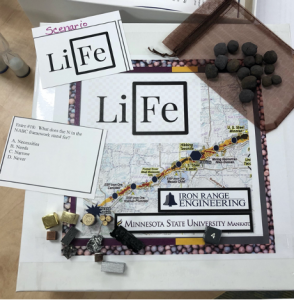
Figure 14. A second group of students improved the game, including creating this fancy box to hold the cards and game pieces.
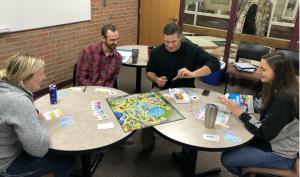
Figure 15. These two learners also created a modified Game of Life with Six Sigma questions (another course they were taking).
In addition, these two students created and hosted a 2-hour event for the others in the program. Following my “review your fundamental principles” goal, this event had small groups of students move from room to room, solving puzzles and riddles that led them to practice the equations, diagrams, applications of these fundamental principles. The students organized several faculty volunteers to help with this engaging event, which culminated with an exciting Jeopardy game on-stage with the two winning teams, buzzers, and a faculty host.
So far, 20 students have been involved with the development of these games. Ten wrote reflections and all mentioned that the experience helped them to learn the concepts from class better. They enjoyed learning about educational game development and they found in participating in developing learning games:
#1: “I found when making the questions on the card that it helps you think of the principle that is used throughout the course. When I had to make the situation part, that it connects the principle with real life. The best part was playing the game and seeing how all of the aspects work together.”
#2: “Some of the questions that were previously written are easier for me to solve than they were the last time I looked at them. Writing down the answers for these questions really helped me solidify almost all of the knowledge that I picked up this block in Entrepreneurship. It was a fantastic opportunity for knowledge crystallization.”
#3: “I found it helpful to not only state the answer but also in creating three wrong answers. This was an excellent way of refreshment for the information in the course. When the game is completed, it will be extremely helpful in preparation for future exams.”
#4: A student who developed a new Six Sigma Board game with a peer wrote:
“The core concept of game-based learning is teaching and learning through repetition, failure, and accomplishment of goals in a low stakes environment…The other students loved our game so much they didn’t want to quit playing…Creating a game was extremely fun. I had the chance to learn more about game-based learning and why it works so well, then I had the opportunity to create and develop my own game! This experience was very valuable. When making the Action Card for our game, [peer student] and I did a lot of reading and a lot of review on each stage of the DMAIC process. It was a great way to learn the information yourself, but also keep in mind how you are helping others to learn about Six Sigma in the future.”
I have offered the Game-Based Learning course about once a year, and it always has a small enrollment but often has a big impact on other learners in the program.

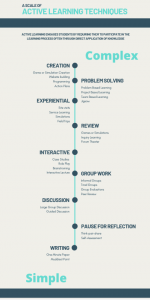
Figure 16: Scale of Active Learning Techniques. Adapted from Chris O’Neal and Tershia Pinder-Grover, Center for Research on Learning and Teaching, University of Michigan
Figure 16 shows that Active Review Sessions such as Games are toward the more complex end of the Active Learning Techniques spectrum. Since it involves “play,” students relax and deep learning often results.
Other game platforms that our program uses as a game-based review include Kahoot! (www.kahoot.com) , Quizlet (www.quizlet.com), and the Anki app (https://apps.ankiweb.net/) Quizlet does work through Zoom or other virtual meetings. My colleagues and I find it helpful to have students develop the questions for a Kahoot! game for class review or for outreach events for high school students. This is a purposeful manner to advance learning; developing learning materials for others is an evidence-based pedagogy to learn and review knowledge.
And it’s fun!
Pro Tips for facilitating students in creating learning games:
- Connect the game content to learning outcomes of the course
- Introduce the basics of educational games
- Have students create their own games in small groups
- Plan a play-test day and have peers give feedback to be used to improve the game
- Assess on communication and teamwork skills and the process of iterative improvement; not necessarily the quality of the final product.
- Keep it light and fun!
We have also developed games for program-wide events. Two of us faculty members developed an Escape Room game event in which facilitated students in reviewing the Fundamental Principles from their technical learning. Since the spoken exam related to the Fundamental Principles of Engineering requires students to explain and draw their technical knowledge on a whiteboard in front of a panel of faculty, the game simulated that exam in a fun, low-stakes manner.
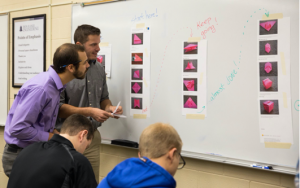
Figure 17. Students used their fine motor skills to fold an origami die to use in the game.

Figure 18. Students checked in with a faculty member to leave their phones and receive their Token bag, then started solving Fundamental Principles problems stationed at mobile whiteboards around the room.

Figure 19. A raise of the hand indicated when they were ready for an Instructor to assess their work.

Figure 20. Tokens of specific colors were earned for quality work in each of four content areas (mechanical engineering, electrical engineering, entrepreneurship, and modeling/software principles). The game was limited to 1.5 hours and prizes were awarded to students who earned the most tokens during the review game.
Student feedback in their post-game written reflection was positive.
- “Was challenging and fun. Highly focused.”
- “Was engaging and a competitive way to learn.”
- “Make you think on your feet.”
- “The game/fun factor added motivation.”
- “New, different, put a little pressure on us. I have further identified, verified strengths vs weaknesses. Nice job, Faculty.”

Figure 21. Triumphant student game “winners”
My colleagues and I ran four iterations of this game event over two years. Some were quite extravagant with theme-based stations and faculty members in costumes.
For more details, see Leung, E., & Pluskwik, E. (2018, June). Effectiveness of Gamification Activities in a Project-based Learning Classroom Paper presented at 2018 ASEE Annual Conference & Exposition, Salt Lake City, Utah. https://peer.asee.org/30361.
Game-based learning has added a dimension of peer learning, social interaction, communication, and fun to our program. Faculty joined in and even donned costumes for some of the game events. We will continue to develop learning games and involving students in the game development process due to the many benefits seen from this playful and engaging way of learning.

